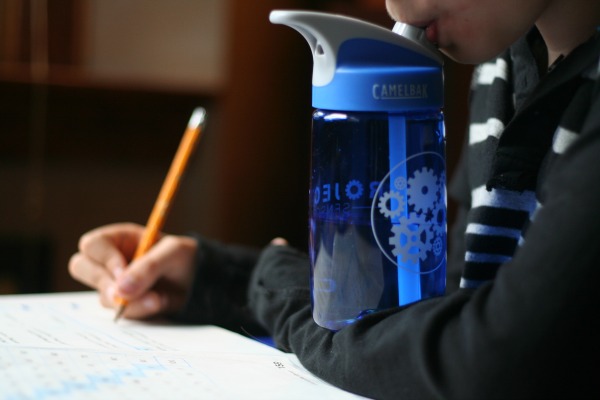This post does contain affiliate links.
“J! Take that out of your mouth!” I say that about a thousand times a day.
You see, my son’s a chewer. He is four years old and he still puts stuff in his mouth every.single.day.
I’m not going to lie…it can sometimes drive me crazy.
The edges of books get destroyed, lids of makers don’t fit anymore, a lot of our small plastic toys have teeth marks, and everything is wet.
The other day I mentioned to my husband that they make this jewelry for kids that’s chewable and that we might consider giving J one of those.
His response was “why don’t we just teach him not to chew anymore and remind him to take stuff out of his mouth?”
A very valid question, but…
I’ve reminded him to stop every day but it’s not working. We have to take a different approach.
Plus, how can I discipline him about this when he isn’t even aware that he’s doing it most of the time?
Through some very eye opening research, I’ve discovered that it’s a sensory need that he has. No, he does not have a disorder. He is a healthy, normal developing child that has a need.
You see, we all have sensory needs in some way or another, and we all avoid or seek out certain sensory input.
Like for myself, I avoid noises and seek out touch. I can not handle loud noises, especially loud high-pitched noises. But, I adore soft fabrics, and have a habit of continuously rubbing my feet and hands over interesting feeling textures.
I’ve discovered that J seeks out oral things. He chews, loves his electric toothbrush, and sometimes he over-stuffs his mouth when eating. All those are signs of a sensory need for him.
So instead of just making him stop something that he doesn’t really have any control over, it’s time to give him a better outlet for his need.
So that’s why I’m buying him something that he is allowed to chew on. Then, I can redirect him to that whenever he has the need to chew. A few good options are:
- Chewable Jewelry
- A water bottle like this one
- A pack of gum
I love that I’m learning so much more about how we either seek or avoid certain senses. It’s fascinating to me, and since I know more about it, I can now see past my children’s behaviors a bit more and help them get their needs met.
Seriously, since discovering my son’s sensory need for chewing, I can handle it with more grace than I ever was able to before. And I’m discovering more of his sensory needs every day.
If you’d like to know more about discovering your child’s sensory needs, these posts are great!
Sensory Signals
Decoding Everyday Kid Behaviors
And, if you’d like to find great sensory tools for your kids, check out Project Sensory where you can get a few tools for your child, or a whole Sensory Fix that has everything you could ever need.
This post does contain affiliate links, which does NOT add extra cost to you. I only promote products that I love.
Join the thousands of others who subscribe to our weekly newsletter, so you can stay up to date with everything happening on Dirt and Boogers. No spam…I promise!



We went through the same thing and didn’t realize what it was, even his fingernails. I have a relative that is an pediatric therapist and deals with sensory issues and she sent me to The Sensory Project website. We bought the dog tag necklace. His teacher loved the necklace because he is 1st grade and they use the large pink erasers. She had to keep taking it away from him because she was scared that he was going to get choked. He kept it around his neck and under his shirt until he needed it. The teacher loved it!! Unfortunately, he has hit the age of not wanting to be different a little early and didn’t like kids asking him about it so he conveniently lost it. The teacher tried to tell him that they thought it was cool but he still didn’t like it. We are going to have to try something else but great stuff.
NO WAY! I did not put two and two together for my daughter. The most common thing I say to her is, “Not in your mouth.” I’ll get one of those bite valve water bottles, and poke around the Sensory Project’s website some more. 😀